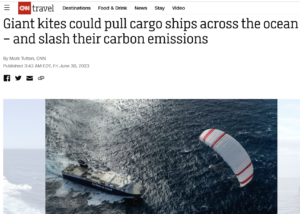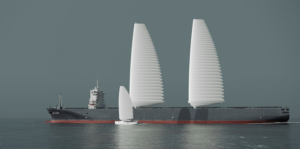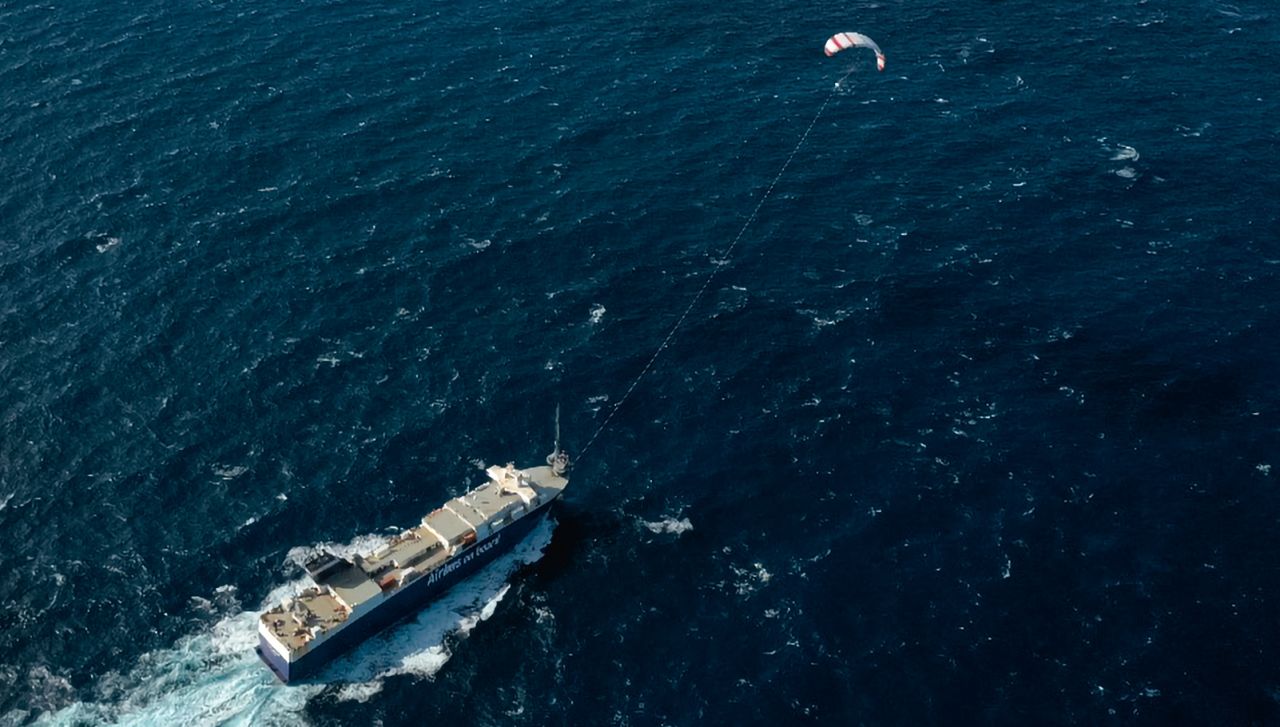Scientists propose new strategy for modern sails to help shipping sector meet its carbon reduction goals
July 3, 2023Researchers have identified a strategy that can offset the random and unpredictable nature of weather conditions that threaten carbon emission reduction efforts in the shipping sector. Erratic weather is a major source of concern for ship owners installing modern sails to reduce carbon emissions. However, new research from The University of Manchester highlights operational strategies that can reduce shipping emissions by up to a quarter, strengthening confidence in sails as a decarbonisation tool.It is estimated that the international shipping sector contributes to 2–3% of global carbon emissions annually and its target to cut carbon by 50% relative to 2008 levels by 2050 falls short of the cuts required in the Paris Climate Agreement, meaning the shipping sector requires urgent global action.
The research, published in the journal Ocean Engineering, calculated carbon emissions from more than 1000 ship departures setting sail from three main shipping routes. The results found that combining modern sail technology with efficient routing systems could provide greater assurances of carbon savings by using the technique that reduces uncertainty from unpredictable weather patterns.
Dr. James Mason, previously a postdoctoral researcher and now a visiting academic at the Tyndall Centre for Climate Change Research at The University of Manchester, said: “Current measures to reduce carbon emissions include fitting retrofit technologies, such as wind propulsion technology, where modern sails produce direct energy from the wind to reduce the power consumed by a ship’s engine. Weather routing is also used as an efficient routing system to allow a ship to deviate from standard shipping routes to search for new routes with more favorable winds.
“Current academic methods assume a perfect foresight of future weather rather than accounting for unpredictable winds that are happening in real-time. This can detrimentally reduce the carbon savings from weather routing and could present a real challenge for the shipping sector when trying to meet its climate reduction goals.”
Wind propulsion and efficient routing can provide maximum carbon savings of up to 29% in ideal conditions and weather uncertainty reduces these savings by 10-20%. Further research is needed to understand how ships can achieve these maximum savings in practice. …
Reducing shipping emissions by up to a quarter by using wind propulsion with efficient routing could provide profound benefits to the sector. The research offers a clearer understanding of the potential carbon savings achievable through wind propulsion decarbonisation strategies, without which, objectives in the Paris Climate Agreement may become out of sight.
Presumably using engine power to go looking for the wind…or perhaps they should think about oar propelled galleys.
#
CNN: Giant kites could pull cargo ships across the ocean – and slash their carbon emissions by an average of 20%. – By Mark Tutton, CNNm – June 30, 2023:
You may have seen kitesurfers in action, harnessing the power of the wind to pull them over the sea. Now imagine the same concept applied to a 1,000-square-meter kite, flying 300 meters above the water – only instead of towing a surfer across the waves, it’s helping to propel a colossal cargo ship across the ocean.
That’s the basic idea behind the Seawing, a technology being developed by French company Airseas, which it says could help cargo ships reduce their fuel consumption, and cut their carbon emissions by an average of 20%. …
Powered predominantly by fossil fuels, the shipping industry accounts for around 3% of global greenhouse gas emissions, according to the International Maritime Organization – which is why there’s an urgent need for change, says Airseas co-founder and CEO Vincent Bernatets.
Its flight is controlled by autopilot software that operates from a box beneath the kite, which is in turn attached to the ship by a 700-meter-long cable that provides power and sends data to and from the vessel.
A smaller version of the Seawing being tested on a ship crossing the Atlantic Ocean. Courtesy Airseas.“What differentiates it from other wind solutions,” says Bernatets, “is that the wing is not just pulled by the wind and countered by the ship.” Instead, it flies in figure-of-eight loops, which multiply the pulling effect of the airflow to give what he calls “crazy power.”
“Plus, we fetch the wind 300 meters above the sea surface, where it’s 50% more powerful,” adds Bernatets. The combination “explains why the power is tremendous for a system that is very compact, simple on the bow of the ship, and can be retrofitted on any ship, not just new ships,” he says.
Taking flight
For more than a year, a 250-square-meter version of the Seawing has been tested on a cargo ship chartered by Airbus (which owns a minority stake in Airseas), sailing across the Atlantic. Bernatets says the Airseas team has deployed, launched and flown the kite, and this May, the company announced that the kite had successfully towed the ship. In December, it will begin testing its “dynamic” figure-of-eight flights.
The company has received €2.5 million ($2.7 million) in funding from the EU, and says it already has orders from Airbus and Japanese shipping company “K” Line. It hopes to have the technology fully operational by the end of 2025.
Maxime Horlaville/polaRYSE/Airseas
…
Bernatets says it could offer enormous benefits on cross-Pacific and Atlantic routes and any north-south routes — cutting fuel use by 20% for “70 to 80% of the world’s shipping trade.”
Pemberton believes that the biggest challenge is for the technology to gain acceptance in the industry. “I’m 100% (sure) it would reduce emissions pretty significantly, but will it get widespread adoption?” he says.
When it comes to industry acceptance, cost is critical and the price of oil has a big influence. “If you look back over history, whenever the oil price goes up, there is always an interest in wind-assisted shipping,” Pemberton says.
Bernatets agrees that rising fuel prices provide an incentive for ship owners to install the Seawing. Although he wouldn’t reveal the cost of installing the technology, he says it will generally take two to five years for a customer to make back the cost in fuel savings. He adds that savings will become more pronounced as ships transition to green fuels, which are more expensive than fossil fuels and take up more space, because they are less energy dense.
“It’s also a huge enabler for future green fuels,” argues Bernatets. “We allow green fuels to be introduced sooner, both because we save some of the cost, making them more competitive, but also because we reduce the amount of green fuel needed on a ship — which today is a main hurdle, because when you have larger tanks, you can carry less load.”
For Bernatets, that’s all part of his team’s mission. “The fact that we want to contribute to reducing the environmental footprint of shipping, it’s the reason why we’re here — it drives our energy to the next level,” he says.
“We are absolutely convinced that wind is really the next big thing that will radically change and maybe revolutionize shipping.”






